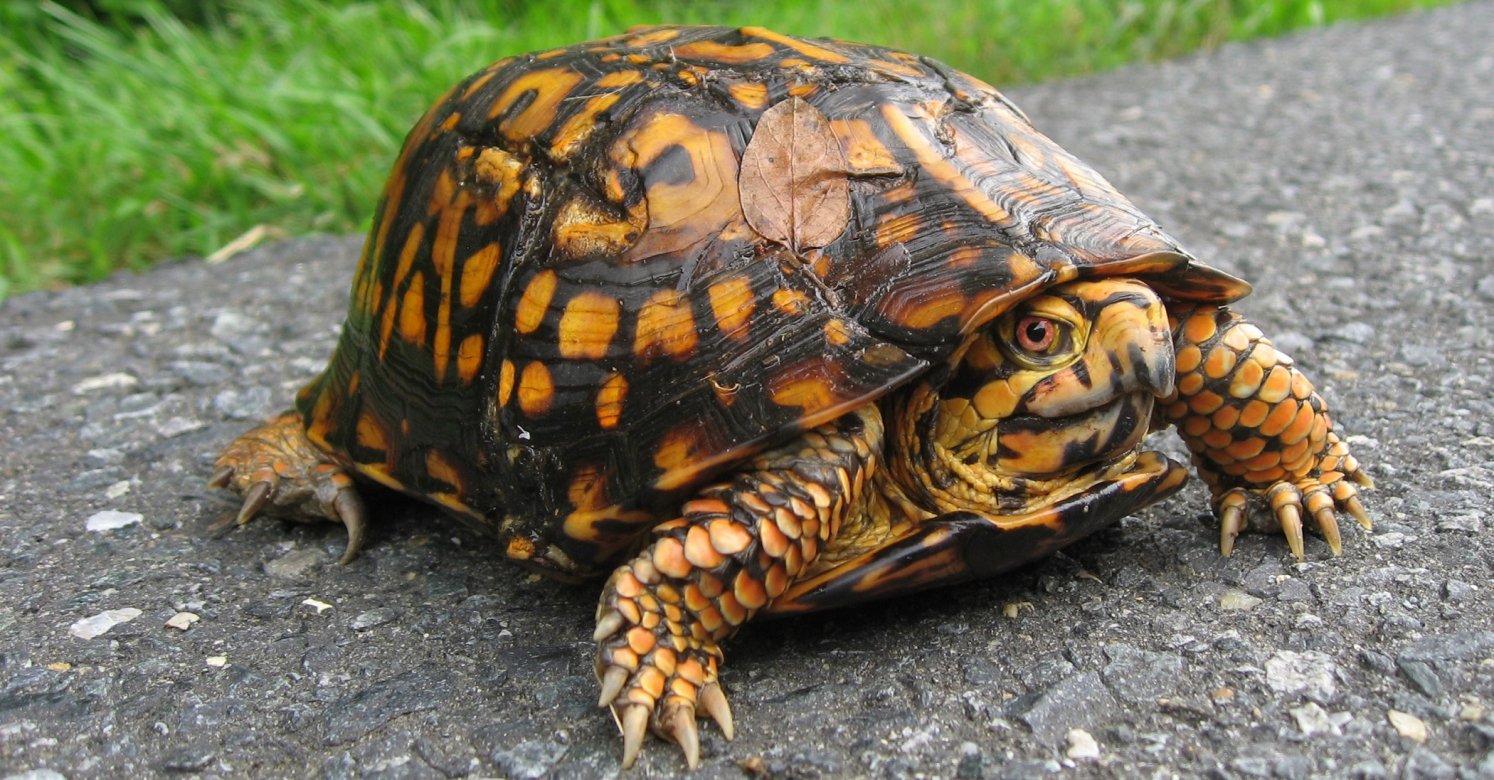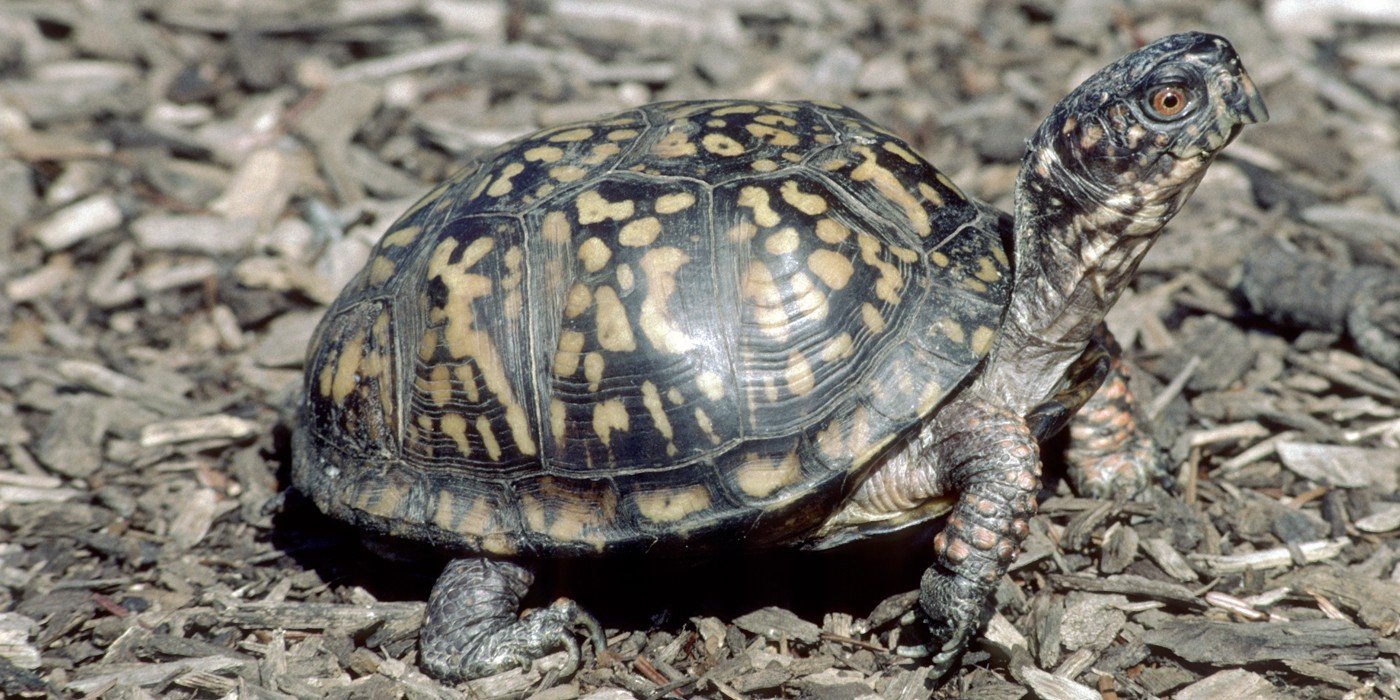Eastern Box Turtle (Terrapene carolina carolina)
Eastern Box Turtle courtesy of NC Wildlife Resources Commission
Eastern box turtles are identified by their patterned, dome-shaped shells. Males have red or orange eyes, while females have brown or yellow eyes. These ancient creatures were roaming the land before dinosaurs appeared. Living up to 100 years, box turtles reach maturity between seven and 10 years of age. Adult females lay two to seven eggs in the spring that hatch in late summer or fall. Box turtles love to eat slugs and other garden pests. Roads, fragmented habitat, lawn mowers, and collecting for the pet trade are some of the biggest threats to this species.
To learn more about ID, range, breeding, and voice, visit Virginia Herpetological Society
| What Eastern Box Turtles Need | How Can We Help |
|---|---|
| Food and Water: Eastern box turtles are omnivores: Fruits, such as blackberries, blueberries, grapes, and mayapples, are on the menu, as are insects, centipedes and other arthropods, snails and slugs, worms, vegetables, roots, and mushrooms. |
|
| Shelter: Turtles are attracted to shrubby habitats with logs and woody debris. During hot, dry conditions, they conceal thenselves in pools of water, mud, or damp ground. They overwinter by burrowing into the soil beneath leaf piles and grass clumps, in a stump hole, or in stream bottoms. |
|
| Nesting: Females often lay their eggs in south-facing well-drained sunny soil. They dig nests several inches below the soil. Young turtles need low substrate, like leaf litter, ferns, and logs to hide in and under. |
|
| Other Threats:Turtles can roam up to a mile in a year. Roads present a deadly hazard for these slow-moving creatures. Invasive exotic plants smother their food plants. Raccoons, foxes, and crows, though native, are major predators for young turtles. Lawn mowers kill and injure turtles. |
|





